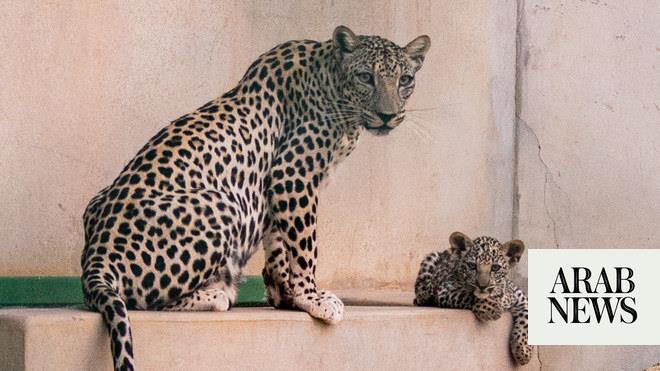
Iwatch in delight as an osprey lands on a Scots pine, bringing a huge fish back to its hungry chicks. Moments later, I have close-up views of a red kite, its nest swaying to and fro in the breeze. Finally, I witness the first flight of a young peregrine – the fastest living creature on the planet.
I don’t need to travel to enjoy these unforgettable views of Britain’s birds of prey; I’m at home in Somerset, watching webcams. These livestreams – from Loch of the Lowes in Scotland, Sculthorpe in Norfolk and just down the road in Taunton – provide round-the-clock entertainment for their avid viewers, who can follow the progress of these nesting birds from the comfort of their living rooms.
What began during the spring 2020 lockdown as a welcome substitute for seeing birds in real life has since turned into a national obsession – with almost 30 live webcams on peregrine nests alone. As Ed Drewitt, the author of Urban Peregrines, tells me: “When the chicks are about to leave their nests – which is happening right now across the UK – it can be particularly nailbiting if you’ve watched their every move since hatching.”
And what a perfect time to watch these raptors, because Britain’s birds of prey – many once persecuted to the brink of extinction – are this year enjoying a golden summer. Last week came the welcome news of the first osprey chick to hatch on the south coast of England for more than two centuries, in Poole Harbour, Dorset. Given that this fish-eating raptor was once so rare that the nest at the RSPB’s Loch Garten reserve in Scotland was under 24-hour guard, this is truly astonishing.
Ospreys returned to breed in the UK the 1950s after a gap of almost 40 years. Today there are close to 250 breeding pairs, in Wales and England as well as their Scottish stronghold.
The Poole Harbour birds were reintroduced by veteran conservationist Roy Dennis and his colleague Tim Mackrill, in partnership with a local charity, Birds of Poole Harbour, set up by the entrepreneur and philanthropist Mark Constantine. “Much suitable habitat exists in southern England for ospreys but they are naturally slow to expand their range,” says Mackrill. “Reintroductions are a very effective way of restoring them to areas where they have been lost due to the past persecution by humans.”
Fans of the osprey hope they will eventually become as familiar as the red kite. This elegant, fork-tailed raptor had almost died out in Britain by the end of Queen Victoria’s reign. To see my first, in the mid-1970s, I had to travel to mid-Wales, where they had taken refuge from gun-toting farmers and gamekeepers.
Now, after what is surely the most successful reintroduction scheme ever, kites are found throughout the UK, and have overtaken kestrels as the “motorway hawk”, hunting for small mammals along grassy verges. I have even seen them floating over Lord’s cricket ground in London.
Peregrines, too, are on the up. Persecuted during the second world war for killing pigeons carrying crucial military messages, then almost wiped out by chemicals such as DDT, they made a comeback, and in recent years have colonised our towns and cities. For a peregrine, a church or office building is what ecologists call an analogue habitat: the urban equivalent of a cliff or crag, providing them with a place to nest, a viewpoint and plenty of food – mostly pigeons and, in London, ring-necked parakeets.
As well as the 30-plus pairs currently nesting in London – on such landmarks as the Houses of Parliament, Tate Modern and Battersea Power Station – peregrines are now breeding in almost every UK city. In some locations, including Norwich and Chichester, there are viewpoints showing passers-by these magnificent raptors as they go about their daily lives.
To put this into perspective, I didn’t see a peregrine at all when I was growing up; my first, in the mid-80s, was in the Wye Valley, where I peered through an RSPB telescope at a distant pair a mile away.
This trio are not the only thiving raptors. Buzzards are now our commonest bird of prey, having spread from the uplands to re-colonise most of lowland Britain. Marsh harriers – once so rare that in the 1970s I saw Britain’s only breeding pair at the RSPB’s Minsmere reserve in Suffolk – now breed on wetlands all over the country. And following their huge success in Scotland, white-tailed eagles are thriving on the Isle of Wight.
This is not just good news for the birds, and for birders like me. It is also a boost to rural economies, with the estimated revenue from eagle tourism on the Isle of Mull alone worth between £5m and £8m a year, and creating up to 160 jobs. Residents of the Isle of Wight have also welcomed the eagles’ return after almost 250 years.
Yet Britain’s raptors still face ill-informed prejudice. That was evident earlier this year, after the suspicious deaths in Dorset of two young white-tailed eagles from the Isle of Wight project.
First the local Conservative MP, Chris Loder – who has received funding from shooting estates – announced that the police should not bother to investigate, as in his opinion the eagles should not have been there in the first place. Dorset police then closed the investigation after examinations on the birds were deemed ‘inconclusive’, despite high levels of rat poison being found.
Those who have followed the sorry saga of the continued persecution of eagles and hen harriers will know that criminal activities – trapping, shooting and poisoning – are endemic in many parts of northern Britain.
Grouse-moor owners and their gamekeepers routinely kill raptors that threaten their precious birds – to safeguard the huge sums they can make from driven grouse-shooting. Much hot air is expressed by those who defend this lawbreaking but, in the end, that’s exactly what it is: hot air.
While most of Britain’s raptors are on the rise, others are in decline. The kestrel, which used to be our commonest bird of prey, has now fallen to third place, behind the buzzard and sparrowhawk. Kestrels are suffering from a shortage of mice and voles on arable farmland due to intensive farming methods.
Agricultural intensification – and in particular the early cutting of grass for silage, which destroys nests – has also led to the demise of the Montagu’s harrier, Britain’s rarest raptor. Named after the pioneering 19th-century ornithologist George Montagu, this elegant bird failed to breed at all in 2020, and may now be lost as a British breeding species.
One of the biggest problems is the misunderstanding about the role birds of prey play in healthy ecosystems.
Even respected Guardian columnists are not immune. In May 2008, Simon Jenkins wrote a comment piece condemning kites and buzzards as “cannibals”, and accusing them of “genocidal carnage”.
He also claimed that the rise in raptors was directly responsible for the decline of songbirds; whereas, in fact, many songbirds are thriving. Those that are not – farmland species such as the skylark, corn bunting and yellowhammer – are in decline because of intensive farming, which devastates the populations of insects on which they feed.
Hopefully, as raptors become ever more part of our daily lives – in reality as well as online – younger generations will not inherit the prejudice and ignorance of their elders. Drewitt believes that technology can play a crucial role: “Webcams are now providing viewers – in the UK and around the world – the opportunity to watch, name and love ‘their’ peregrines”.
And another advantage of webcams, as the godfather of British birding Bill Oddie once noted, is that the birds are protected from harm by being constantly watched: “It’s like the house no one burgles, because the lights are always on.”












